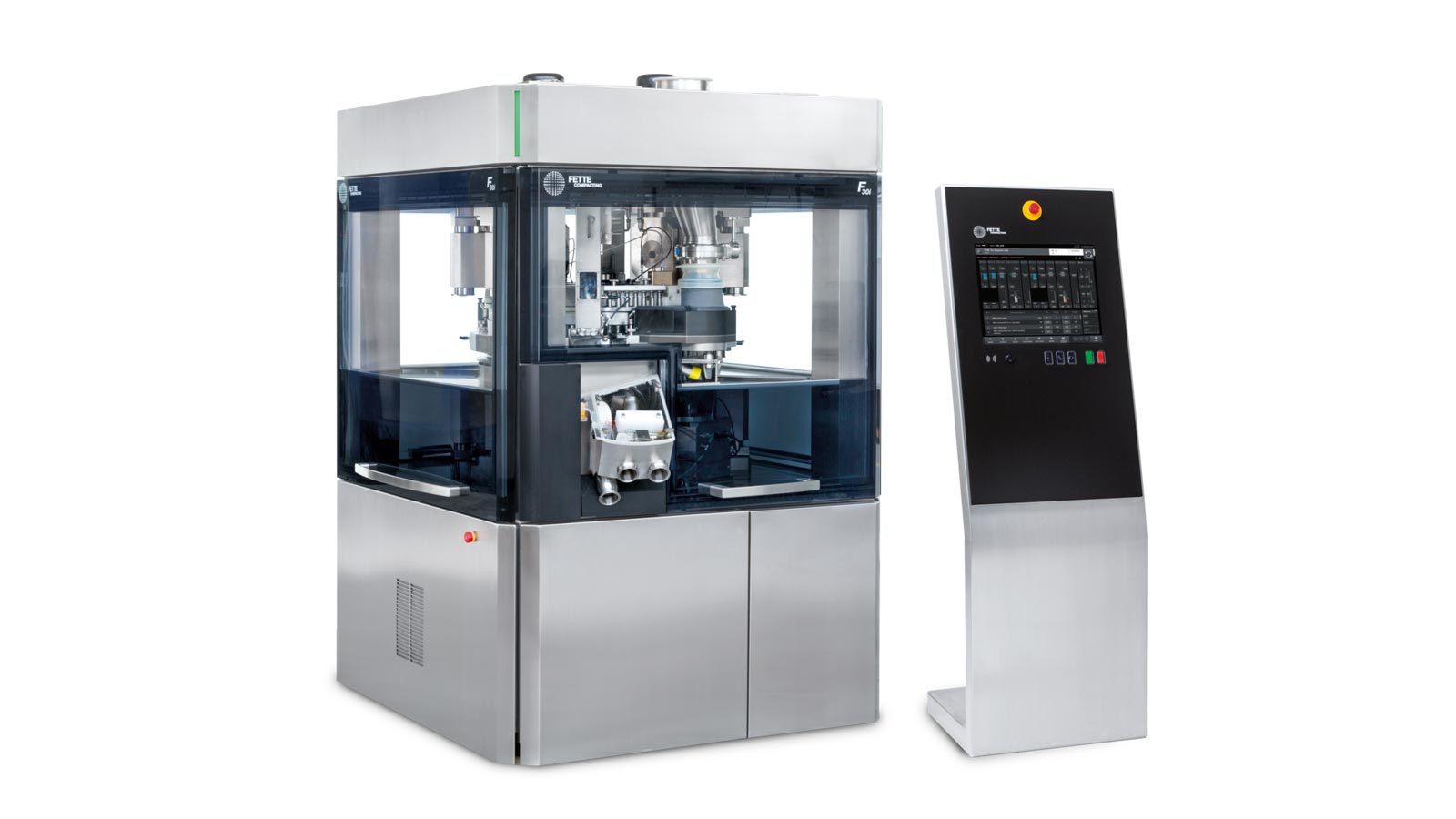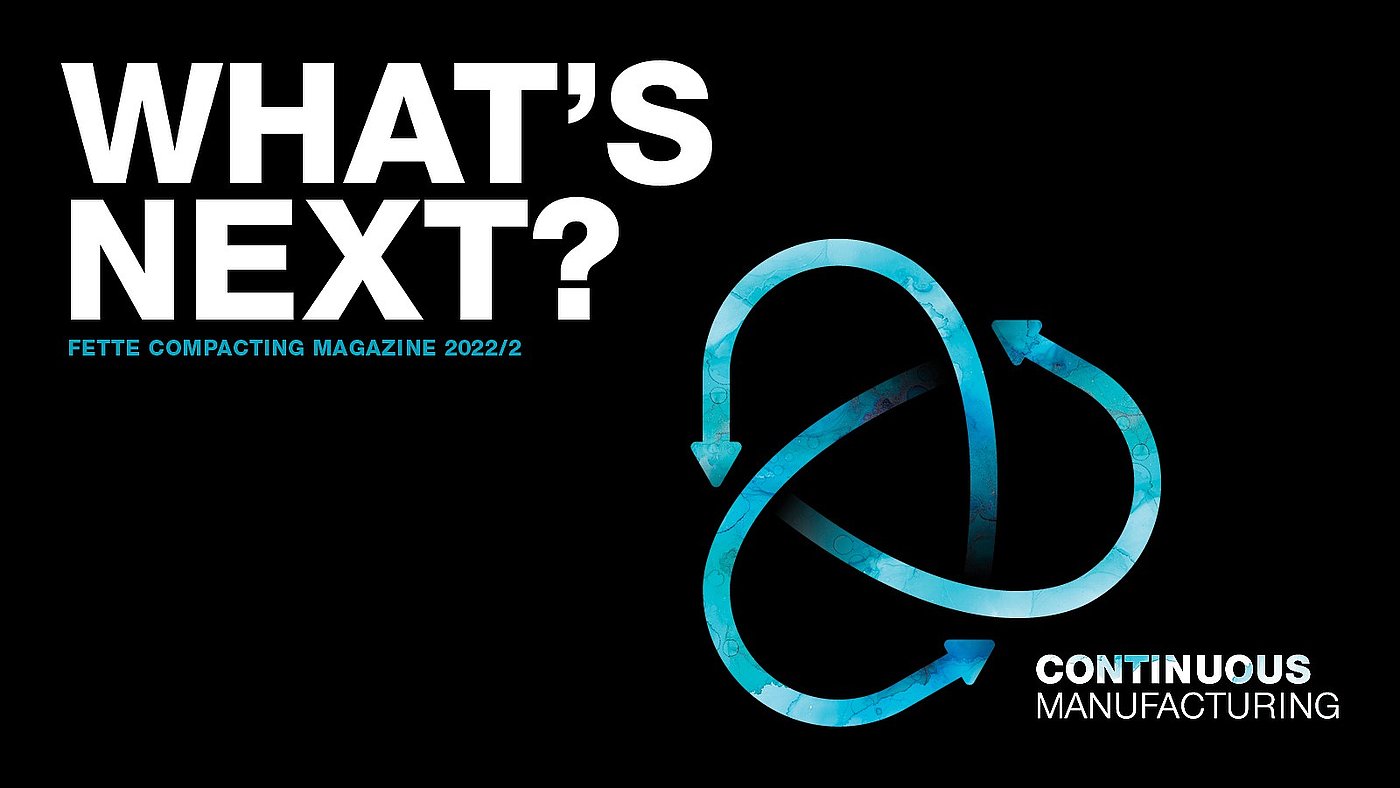Interview partner Jörg Gierds together with colleagues from Fette Compacting during a
presentation.

For decades, the i Series has stood for efficiency and quality in tablet production. To ensure that this remains the case in the future, engineers have merged several innovations with the new i Series. Jörg Gierds, Senior Product Manager at Fette Compacting, explains what users can look forward to.
Mr. Gierds, the generation change in the i Series is in full swing. How are things going with it?
As you can imagine with such a complex project, we have our hands full. But we have already reached several milestones: a start was made four years ago with the F10i single rotary press, which was then followed by the F30i double rotary press. Last year, we closed the gap in the form of the F20i all-rounder. And now we are proud to be able to present all three production machines on the world stage at interpack 2023.
How have the new tablet presses been received by producers to date?
We adopted a collaborative approach at an early stage and developed the new i generation together with our customers. In concrete terms, this means that we specify the requirements with the customers until all the details have been clarified. This resulted not only in a series of new tablet presses, but above all in a user-oriented technology platform on which the mechanical and electronic components are based. This platform has proven itself with manufacturers with very different requirements – from global pharmaceutical companies to start-ups in the nutrition sector. Today, the F10i and F30i are in production operation at several companies. The latest F20i already attracts great interest, so we expect the first projects within the next few months. In the project business for pharmaceutical machines, the path from inquiry to order is relatively long, as a User Requirements Specification (URS) is very extensive. Our colleagues comment on all the individual URS points. This is followed by the negotiations and conclusion of the contract.
What kind of effort will users have to put in during a changeover?
I need to elaborate a bit here: in terms of the platform, we have designed the new models to be system-compatible across all generations. This means that all process-related modules are the same as those of the classic i Series, or at least very similar. One of the concerns of pharmaceutical manufacturers is the costly re-validation that goes hand in hand with a change in production technology. However, our experience shows that the system compatibility of the new i Series significantly reduces the efforts associated with validation and qualification. We are no longer talking about weeks here, but days.
Then both generations can be operated in parallel for the time being?
Definitely! This is in fact essential, as the tablet presses in the classic i Series are running at full capacity worldwide and are expected to continue doing so for some years to come. If manufacturers with larger machine parks initially want to install only individual tablet presses of the new generation, they can do so at any time. For example, with minor modifications they can take over the die or segment rotors from their existing stock. In parallel operation, customers can then also see for themselves the many innovations with which we have equipped the i Series for the future.
What innovations do you mean? Could you identify three primary aspects?
First of all, I mean the innovative design on which the entire platform is based. This includes, for example, a high-performance multi-format tablet chute, an optimized rotor change system, and dust-tight basic equipment for increased operator protection. Secondly, pharmaceutical and nutrition production is increasingly focusing on the aspect of sustainability. As an exemplary step in this direction, all new models feature intelligent energy monitoring. Among other things, it records electricity consumption and enables precise forecasts of future energy consumption – with a savings potential of around 15 percent. Thirdly, there is the field of digitalization. We refer to the new i Series as “digital ready,” which means it avails of the latest technical connectivity right up to pharmaceutical production 4.0. The platform interfaces are suitable for a Manufacturing Execution System (MES) and the Internet of Things (IoT). This is complemented by apps from OSDi, which allow mobile monitoring of production and in real time.
This sounds innovative but also complicated. You mentioned less effort associated with qualification. How do you bring the two together?
For example, via the Human Machine Interface. We have designed the operating system so intuitively that even less experienced personnel can effortlessly control, monitor and document the tableting processes. As a digital helper, a Workflow Operation Wizard guides users through the procedures step-by-step and in an easy-to-understand manner. Another decisive factor is process reliability, which we have once again raised to a new level and thus reduced the risk of operator errors to an absolute minimum. This is the aim of the optional RadioFrequency Identification (RFID) function, for example. This contact-free transceiver system allows components to be automatically identified by the machine and matched with preset recipes. In addition, the new i Series can be easily scaled so that mechanical settings can be modified exactly according to recipes. Basically, we are talking about much more than a platform: we’re talking about the symbiosis of operator and tablet technology into a safe and highly-efficient unit. This is the path we are consistently pursuing.



